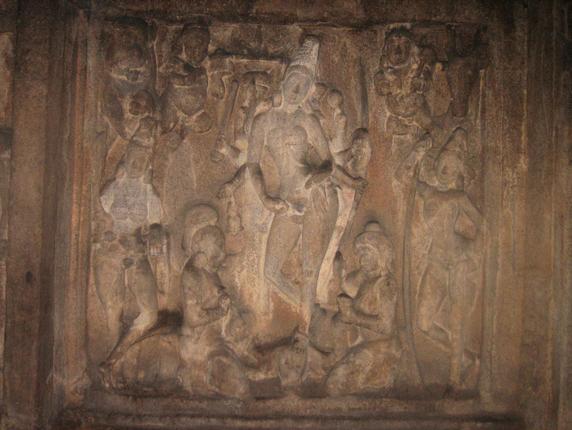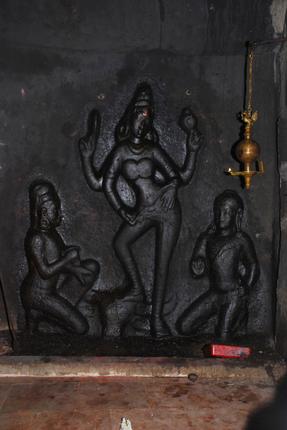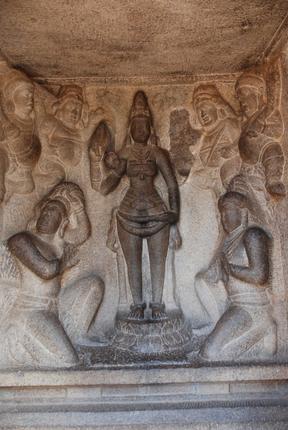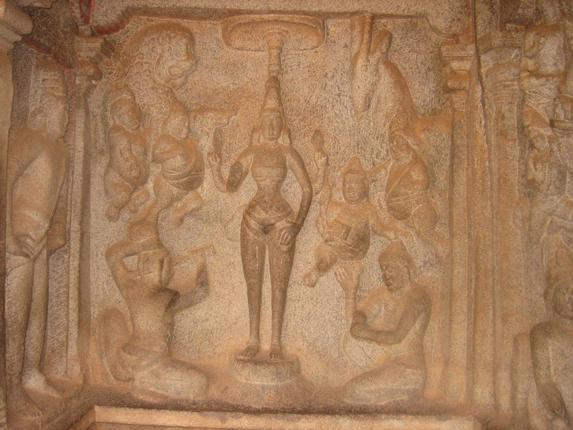
The ancient port town of Mamallai may be synonymous with stone sculpting but there are places that have masterpieces. The continuous quest to bring out such stunning works of art spread across our land, unfolds the seventh CE cave shrine of Sri Ranganatha Perumal in Singavaram, situated four km to the North of Senji in Villupuram district.
A unique tall Mandapa greets visitors to the site while the actual shrine is atop a small hillock and is serviced by a long flight of steps. As one passes into the main shine, one can see a set of matched pillars and pilasters hewn into the rock to form the entrance hall or the artha mandapam. Only then does one realise that the structural temple has built over the cave shrine complete with its own door guardians.
A fantastic Sayana perumal (the reclining Vishnu), all of 24 ft, has been fashioned from the mother rock and is a sight to behold.
TREASURE HOUSE
The scant visitors that the shrine receives however do not realise that there is another treasure just nearby. The Thayar shrine, which has been added later, has a small window to its side from where visitors can get a glimpse of a spectacular relief sculpture of Durga or Kotravai as her form was known in those times.

In classic sculpting tradition the composition achieves an aesthetic grace with increased flexion, as compared to a school class group photo attention pose. The sculptor has artistically slanted Durga’s body at three places – the Tribanga and superbly offset the shift of the legs by having her place her right leg on the severed buffalo head – called Urdhvajanu in iconographic texts – and counter balanced the same with the lower left hand slightly raised and resting above the hip. The early date confirmed with the Prayoga chakra on the upper right hand and her Conch on the upper left. The kneeling devotee to the right is thankfully not offering his head but only cutting his hand (symbolic bloodletting) while his companion’s pose mimics that of holding a flower for her.

It would be an interesting exercise to arrange the similar compositions in stylistic order – all executed within a span of 100 years. One can see the superior effect of the Tribanga over the Sama Banga postures of the ones in the Draupadi ratham and the Varaha mandapam and also how the left hand rests lower on the hip, the classical Kati Hasta, giving Singavaram a slightly later date than them.

In contrast, the multiple armed Adivaraha cave Kotravai has the sculptor striving for more aesthetics, using his artistic license in sculpting her with slightly exaggerated (elongated) legs, standing on the severed head of Mahisha, with the right leg coming entirely behind the left giving the entire compositon an aesthetic grace. Hence one would give it a date post-Singavaram.
Surely Singavaram must find its place in the ‘must visit’ list of the tourist and the pious alike.
All photos are courtesy of Ashok Krishnaswamy, Arvind Venkataraman and http://puratattva.in/
(Vijay is a sculpture enthusiast and blogs about temple art at www.poetryinstone.in)
source: http://www.thehindu.com / The Hindu / Home> Feature> Friday Review> History & Culture / by S. Vijay Kumar / Chennai – September 19th, 2013